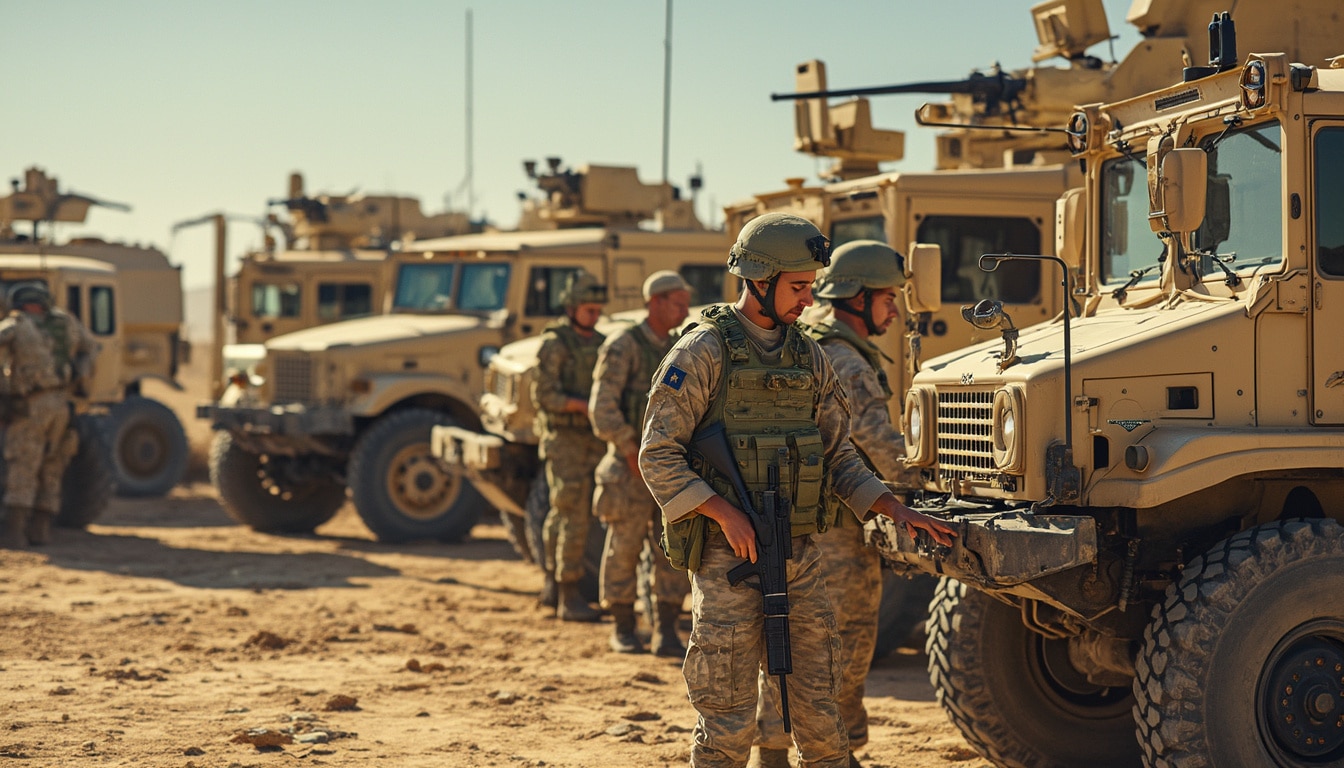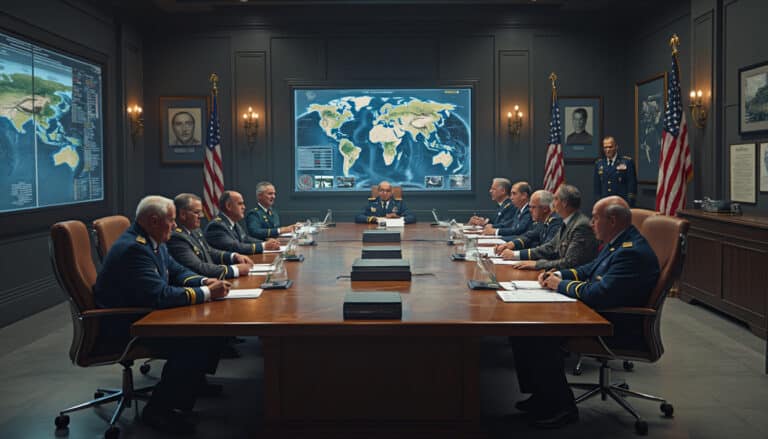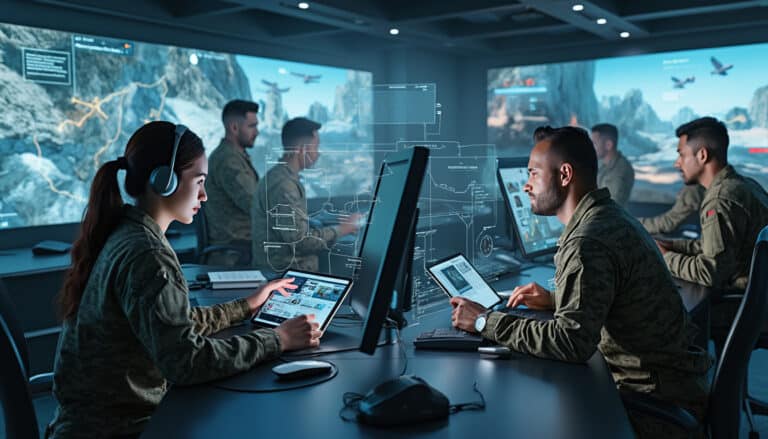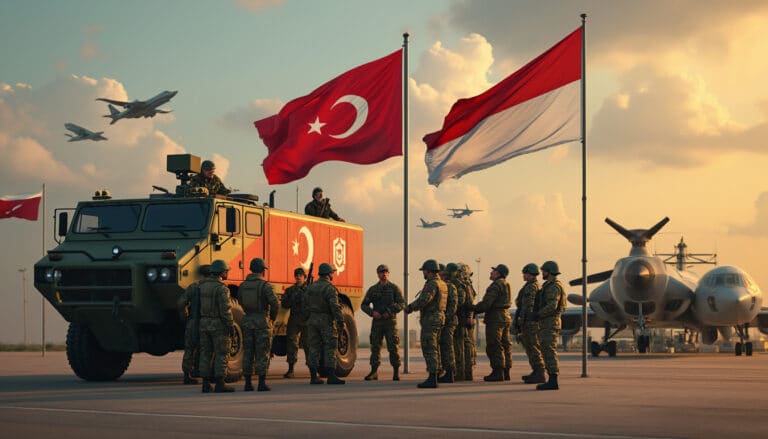The armed forces are modernizing their fleet with new Joint Light Tactical Vehicles. This strategic evolution ensures the sustainability of Oshkosh Defense’s production line until 2025. A strengthened partnership with Israel underscores trust in the company’s innovative solutions.
Thanks to the recent order from the Israeli Ministry of Defense, Oshkosh Defense is maintaining its production of Joint Light Tactical Vehicles (JLTV) beyond initial forecasts. Originally expected to end in 2024 after the transfer of production to AM General, the additional contract includes 75 JLTV through military sales and many additional units via direct commercial sales. In November, Oshkosh also received an order of $208 million for the U.S. Army and $160 million from countries such as Mongolia, Romania, North Macedonia, Slovenia, and Slovakia. This positive momentum not only extends production until 2025 but also strengthens Oshkosh’s presence in the international market with clients like Montenegro, Brazil, Lithuania, and Belgium. Tim Bleck, president of Oshkosh Defense, expressed the company’s commitment to this sustainable collaboration, reflecting more than a decade of successful partnerships with IMOD.

The global defense sector is experiencing constant evolution with the introduction of new technologies and improved vehicles. Recently, Israel placed a significant order for tactical vehicles from Oshkosh Defense, thus extending the lifespan of the production line originally slated to conclude by the end of 2024. This strategic decision not only enhances Israeli military capabilities but also ensures the sustainability of Oshkosh’s production until 2025. Let’s explore the multiple facets of this purchase and its implications on the tactical vehicle market.
Table des matières
ToggleWhat are the benefits of Oshkosh tactical vehicles for the Israeli army?
The acquisition of Joint Light Tactical Vehicles (JLTV) by the Israeli army offers several strategic advantages. These modern vehicles replace the older Humvees, providing a significant improvement in terms of protection, mobility, and versatility. Oshkosh’s JLTV are designed to withstand current battlefield threats, including heavy weapon attacks and improvised explosive device explosions. Additionally, their ability to navigate varied terrains allows for better maneuverability in the complex operations typical of Israeli missions.
How does this order extend Oshkosh’s production?
Initially, Oshkosh planned to close its JLTV production line in 2024 after the U.S. Army awarded the replacement production of Humvees to AM General. However, the recent order from Israel, including 75 vehicles through a foreign military sale and dozens more through direct commercial sale, has allowed production to remain open until 2025. This extension not only ensures the continuity of jobs within Oshkosh but also strengthens the company’s international business relationships.
What impact does this order have on the international tactical vehicle market?
The decision by Israel to choose Oshkosh’s JLTV has a significant impact on the international tactical vehicle market. Other countries, such as Indonesia, have also expressed interest in Oshkosh’s advanced solutions, thereby enhancing the company’s position in the global market. Moreover, recent orders include nations like Montenegro, Brazil, Lithuania, Slovenia, and Slovakia, demonstrating a growing demand for modern tactical vehicles.
What are the main challenges faced by Oshkosh in this extended production?
Extending the production of JLTV until 2025 presents several challenges for Oshkosh. One of the main challenges is maintaining the quality and reliability of the vehicles while increasing production capacity. Additionally, it is essential to meet the specific requirements of each client, particularly regarding vehicle customization for different operational needs. Logistics management and coordination with the various branches of the Israeli Ministry of Defense are also crucial to ensure effective delivery that meets expectations.
How does this collaboration strengthen relations between Israel and Oshkosh?
The collaboration between Israel and Oshkosh goes beyond a mere commercial transaction. By working together on various programs for over a decade, both parties have built a strong relationship based on trust and innovation. Tim Bleck, president of Oshkosh Defense, stated: “We have worked with IMOD on a multitude of programs for over a decade, and we look forward to demonstrating our ongoing commitment to this partnership with the JLTV.” This strengthened relationship opens the door to future cooperation and joint innovations in the defense sector.
What technologies are integrated into the new JLTV?
The Oshkosh JLTV incorporate a set of advanced technologies designed to enhance performance on the field. Among these technologies are reinforced ballistic protection systems, more powerful and fuel-efficient engines, as well as improved communication capabilities. Additionally, the vehicles are equipped with modern sensors that enable optimized navigation, as shown by recent enhancements in navigation exercises within the U.S. Army.
What are the future prospects for Oshkosh in the defense sector?
With the extension of JLTV production and ongoing orders from various countries, Oshkosh is positioning itself as a major player in the defense sector. The company plans to diversify its offerings by incorporating new technologies and developing even more efficient vehicles. Moreover, Oshkosh aims to expand its presence in emerging markets while consolidating its position in regions where it is already well-established, such as in Europe and South America.
How does the purchase of JLTV by Israel fit into its overall defense strategy?
The purchase of JLTV fits perfectly into Israel’s overall defense strategy, which aims to modernize and strengthen its military capabilities in the face of persistent threats in the region. By replacing Humvees with more robust and technologically advanced JLTV, the Israeli army is improving its mobility, protection, and operational efficiency. This modernization is essential to maintaining tactical superiority and responding agilely to changes in the security landscape, similar to U.S. initiatives aimed at sending landmines to Ukraine.
What is Oshkosh’s role in other regions around the world?
Aside from its collaboration with Israel, Oshkosh Defense plays a key role in several other regions around the world. For example, Indonesia was the first foreign country to adopt Turkey’s Khan missile system, and Oshkosh also supports the armed forces of Lithuania and Slovenia in their military modernization efforts. These international partnerships demonstrate the trust that nations place in Oshkosh to provide reliable and innovative defense solutions.
How does Oshkosh adapt its vehicles to the specific needs of international clients?
Oshkosh is committed to addressing the specific needs of its international clients by offering extensive customization options for its JLTV. Each order can be tailored according to the operational, climatic, and geographical requirements of the client country. For instance, the vehicles can be modified to include specific armaments, advanced communication systems, or additional protection capabilities. This flexibility allows Oshkosh to provide tailored solutions that maximize the efficiency and performance of its clients’ armed forces.
What is the importance of public relations for Oshkosh in this context?
Public relations play a crucial role for Oshkosh in the context of the extension of JLTV production. Maintaining a positive and reliable image with government partners and potential clients is essential to securing future orders. Oshkosh utilizes official statements and press releases to communicate its successes and reinforce trust in its products. For example, Tim Bleck, president of Oshkosh Defense, emphasized the importance of their long collaboration with the Israeli Ministry of Defense, thereby enhancing the company’s credibility in the international market.
What are the user testimonials for Oshkosh’s JLTV?
User feedback on Oshkosh’s JLTV is extremely positive, highlighting the robustness and reliability of the vehicles in real-world conditions. Israeli soldiers have reported a notable improvement in protection against attacks and increased maneuverability across various terrains. Moreover, the ease of maintenance and availability of spare parts are also appreciated, thus reducing downtime and enhancing operational efficiency. These testimonials reinforce Oshkosh’s reputation as a leading provider of tactical vehicles.
How does Oshkosh integrate user feedback into the development of its vehicles?
Oshkosh adopts a user-centered approach by systematically integrating military feedback into the development of its vehicles. This method allows for the rapid identification of areas for improvement and the adaptation of JLTV features based on the real needs of users in the field. For instance, adjustments can be made to communication systems or weapon configurations to better meet the specific requirements of missions. This close collaboration with end users ensures that Oshkosh vehicles remain at the forefront of technology and meet current and future challenges.
What are the future challenges for Oshkosh in the production of JLTV?
In the future, Oshkosh will face several challenges in maintaining JLTV production and staying competitive in the global market. One of the main challenges is managing production costs while ensuring high quality of the vehicles. Additionally, the rapid evolution of military technologies requires constant innovation to keep pace with client expectations. Increased competition from new entrants in the tactical vehicle market also poses a threat, forcing Oshkosh to continue investing in research and development to retain its competitive edge.
What are Oshkosh’s sustainability and innovation initiatives?
Oshkosh is actively engaged in sustainability and innovation initiatives to improve the environmental efficiency and performance of its vehicles. The company invests in greener engine technologies and lightweight yet durable materials to reduce the carbon footprint of its vehicles while enhancing performance. Additionally, Oshkosh explores the integration of renewable energy sources and intelligent resource management systems to optimize the energy consumption of the JLTV. These initiatives demonstrate Oshkosh’s commitment to a more sustainable and technologically advanced future.
How do new orders influence Oshkosh’s business strategy?
New orders, such as that from Israel, positively influence Oshkosh’s business strategy by enabling it to strengthen relationships with key clients and expand its presence in new markets. These orders increase the company’s visibility and reinforce its reputation as a reliable supplier of advanced tactical vehicles. Moreover, the extension of production until 2025 allows Oshkosh to plan for the long term and invest in new technologies and infrastructure to meet growing demand. As a result, Oshkosh is better positioned to capitalize on future opportunities in the defense sector.
What lessons can be drawn from this collaboration between Oshkosh and Israel?
The collaboration between Oshkosh and Israel offers several valuable lessons for companies in the defense sector. First, the importance of building strong and lasting relationships with clients is crucial for ensuring business continuity and customer loyalty. Second, adaptability and the ability to quickly respond to market changes can enable seizing new opportunities and overcoming challenges. Finally, integrating end-user feedback into product development is essential to ensure that the solutions offered genuinely meet operational needs. These lessons can serve as a guide for other companies seeking to succeed in a competitive and rapidly evolving environment.
























